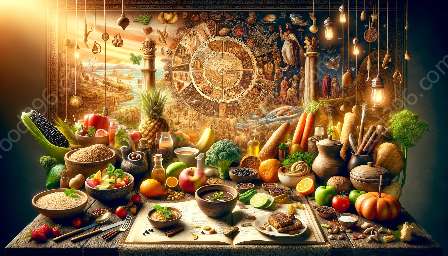Vegan substitutes and alternatives in food history have a rich and diverse background, reflecting the evolution of vegan cuisine. From traditional plant-based ingredients to the modern market's innovative products, the history of vegan substitutes is deeply rooted in culture, health, and environmental consciousness.
As we delve into the history of vegan cuisine, it's essential to trace the origins of plant-based substitutes and alternatives that have been used in various culinary traditions. Additionally, understanding how these alternatives have evolved over time offers insight into the broader landscape of cuisine history.
The Roots of Vegan Substitutes in Food History
Vegan substitutes and alternatives in food history have been intertwined with different cultures for centuries. Ancient civilizations, such as the Greeks, Egyptians, and Indians, incorporated plant-based ingredients as alternatives to animal products. Legumes, nuts, seeds, and grains formed the basis of many early vegan substitutes, showcasing the resourcefulness and creativity of ancient culinary traditions.
In Asia, tofu and tempeh have been essential components of vegan cuisine for over two millennia. These soy-based products were developed as protein-rich substitutes for meat, and their production methods were refined over the centuries, creating a diverse array of textures and flavors.
Moreover, the Middle Eastern and Mediterranean regions have a long history of utilizing plant-based substitutes and alternatives in their traditional dishes. Ingredients like chickpeas (as a substitute for meat) and tahini (as a dairy alternative) have been prevalent in these culinary traditions, shaping the foundation of plant-based cooking.
The Evolution of Vegan Substitutes
With the advent of globalization and the exchange of culinary knowledge, the history of vegan substitutes took on new dimensions. Colonial trade routes introduced a variety of plant-based ingredients to different parts of the world, leading to the integration of new substitutes and alternatives in local cuisines.
During the Industrial Revolution, the rise of processed foods and food technologies paved the way for the mass production of vegan substitutes. Products such as vegetable margarine, plant-based oils, and nut butters emerged as viable alternatives to animal-derived fats, revolutionizing the possibilities of vegan cooking.
Additionally, the 20th century witnessed the commercialization of soy-based products, such as soy milk and textured vegetable protein (TVP), marking a significant shift in the availability and accessibility of vegan substitutes. These innovations laid the groundwork for the development of an extensive range of plant-based meat and dairy alternatives that continue to evolve in the present day.
Cultural and Culinary Influences
Throughout history, cultural and culinary influences have played a pivotal role in shaping the landscape of vegan substitutes and alternatives. Indigenous food practices, religious dietary restrictions, and ethical considerations have contributed to the adoption of plant-based ingredients as viable substitutes for animal products.
For instance, the influence of Buddhism and Jainism in Asia led to the widespread use of plant-based substitutes, inspiring the creation of intricate vegan dishes that showcase the artistry of cruelty-free cooking. Similarly, religious dietary laws in various cultures have spurred the development of plant-based alternatives that adhere to specific dietary restrictions, illustrating the adaptability of vegan substitutes in diverse culinary contexts.
The Modern Era of Vegan Substitutes
In recent decades, the rise of environmental awareness, ethical concerns, and health-conscious consumerism has propelled the development of a wide array of innovative vegan substitutes and alternatives. With advancements in food technology and culinary creativity, plant-based products have transcended traditional boundaries, offering compelling alternatives to animal-derived foods.
From plant-based burgers and sausages to dairy-free cheeses and egg substitutes, the contemporary market is brimming with diverse options that cater to the growing demand for vegan alternatives. The fusion of traditional techniques and cutting-edge innovation has given rise to a dynamic culinary landscape, where vegan substitutes continue to evolve and redefine the boundaries of plant-based gastronomy.
Impacts on Cuisine History
The history of vegan substitutes and alternatives in food has left an indelible mark on cuisine history, shaping the way we perceive and consume food. As vegan cuisine continues to gain momentum globally, the integration of plant-based substitutes reflects a paradigm shift in culinary practices, encouraging a more sustainable and compassionate approach to eating.
Furthermore, the exploration of vegan substitutes in food history invites us to appreciate the ingenuity and resilience of human creativity, as well as the continuous adaptation of culinary traditions to align with contemporary values and needs.
Conclusion
Vegan substitutes and alternatives in food history represent a tapestry of cultural, technological, and ethical influences that have woven together to redefine the landscape of vegan cuisine. From ancient plant-based ingredients to the modern innovations of the culinary world, the history of vegan substitutes reflects a dynamic narrative of adaptation, creativity, and conscious consumption.
By understanding the historical roots and evolutionary pathways of vegan substitutes, we gain a deeper appreciation for the interconnectedness of culinary traditions and the enduring quest for sustainable and inclusive gastronomy.

